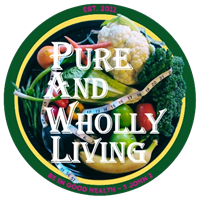This “green” vegetable is a highly nutritious vegetable that has several health benefits. Some of the key factors that make cabbage healthy include:
- Nutrient density: Cabbage is a nutrient-dense vegetable, meaning that it contains a high amount of nutrients in relation to its calorie content – which are a good source of several vitamins and minerals. It is particularly high in vitamin C, vitamin K, and folate, as well as minerals such as calcium and potassium.
- High fiber content: Cabbage is a good source of dietary fiber, which is important for improving and maintaining digestive health, as well as preventing chronic diseases such as heart disease and diabetes. Because cabbage is a roughage, it promotes elimination of waste from the large intestine which can prevent constipation.
- May help reduce inflammation: Cabbage contains anti-inflammatory compounds and antioxidant properties, such as anthocyanins (which give it its purple color) and vitamin C. These antioxidants can help protect against oxidative stress, which may help reduce inflammation in the body.
- May help lower cholesterol: Cabbage contains compounds called sterols, which may help lower LDL (“bad”) cholesterol levels in the blood.
- May help promote weight loss: Cabbage is low in calories and high in fiber, which can help promote feelings of fullness and reduce calorie intake, as well as maintaining a healthy diet.
- Anti-cancer properties: Some studies suggest that cabbage may have anti-cancer properties, possibly due to its high content of antioxidants and other compounds.
There are several healthy ways to eat cabbage, including:
- Raw: Eating raw cabbage is a great way to enjoy its crunchy texture and maximize its nutrient content. You can add shredded cabbage to salads or sandwiches, or use it as a base for coleslaw.
- Steamed: Steaming cabbage can help retain its nutrients while making it easier to digest. To steam cabbage, simply chop it into bite-sized pieces and steam for a few minutes until tender.
- Roasted: Roasting cabbage can bring out its natural sweetness and add depth of flavor. To roast cabbage, chop it into wedges, brush with olive oil, and roast in the oven until golden and tender.
- Fermented: Fermented cabbage, also known as sauerkraut or kimchi, is a great source of probiotics and can help promote gut health. To make fermented cabbage, chop it into thin strips, mix with salt and spices, and let sit at room temperature until it becomes tangy and bubbly.
Overall, the healthiest way to eat cabbage depends on your personal preferences and dietary needs. However, incorporating a variety of cooking methods and preparing cabbage in different ways can help you maximize its nutritional benefits.
In conclusion, the combination of nutrients, fiber, antioxidants, and other health-promoting compounds in cabbage make it a highly nutritious and beneficial food to include in your diet.
